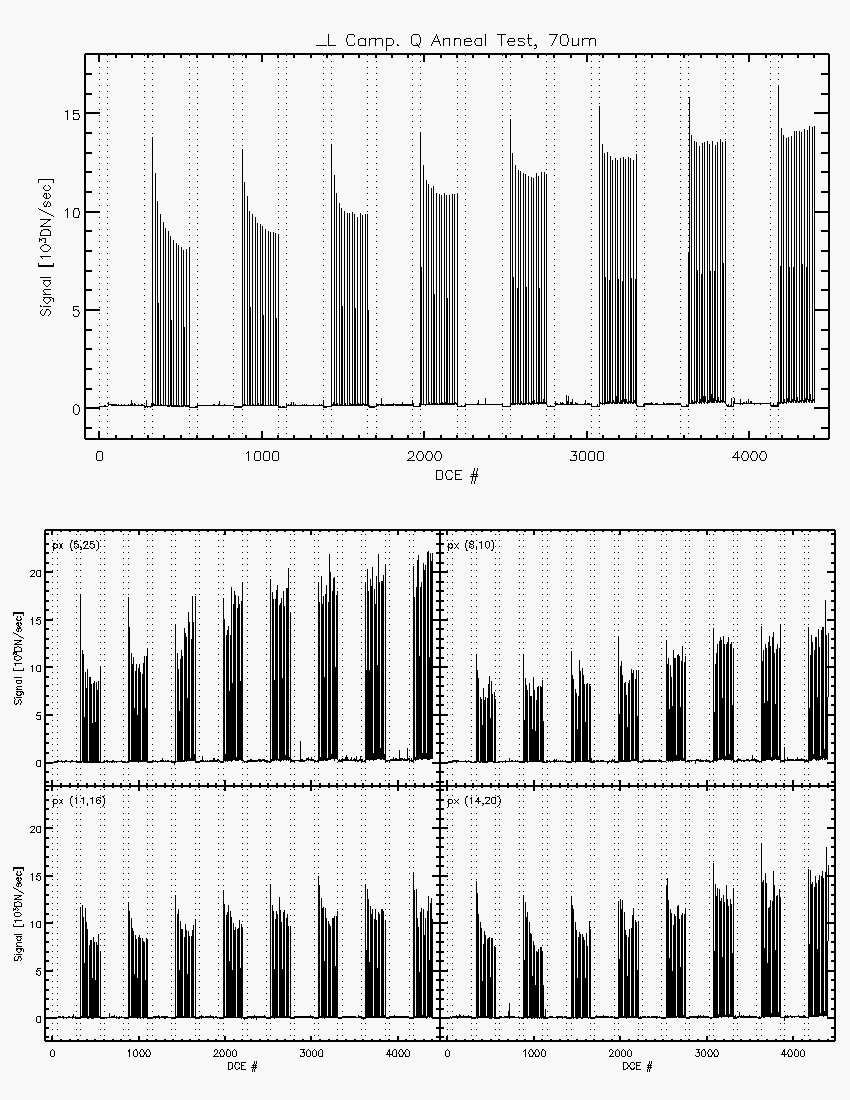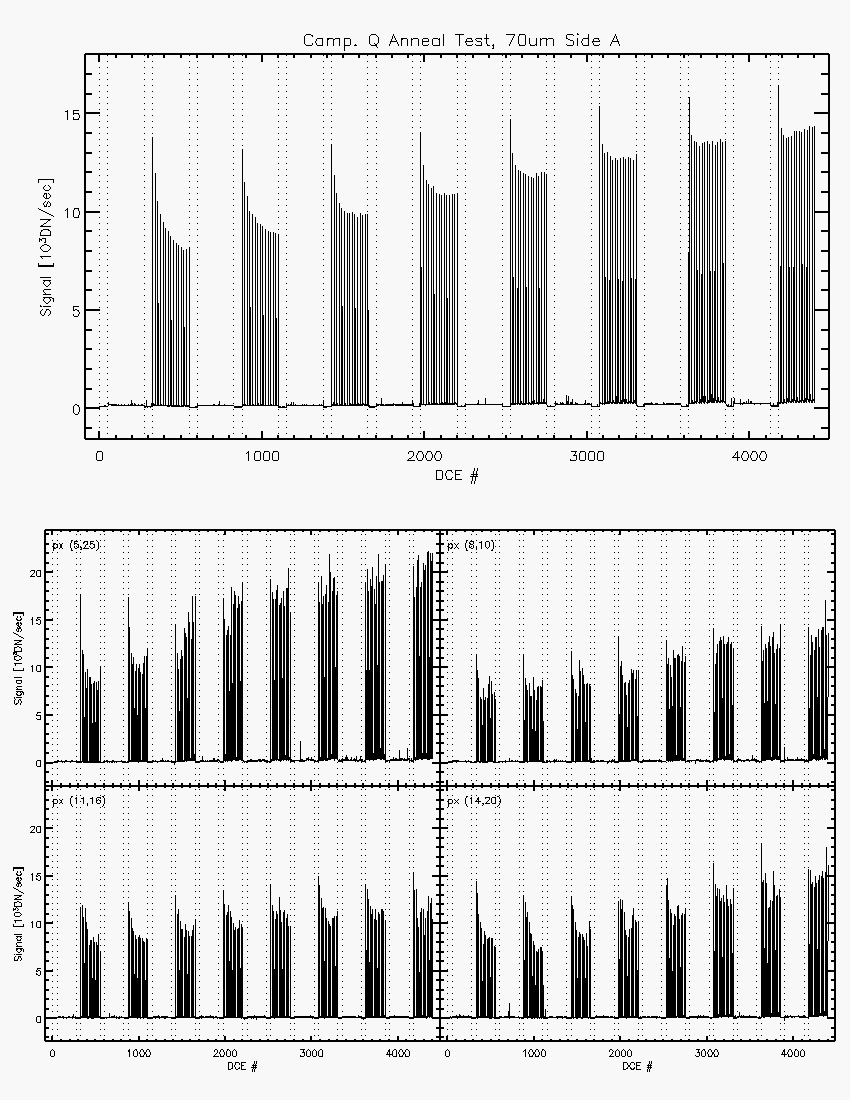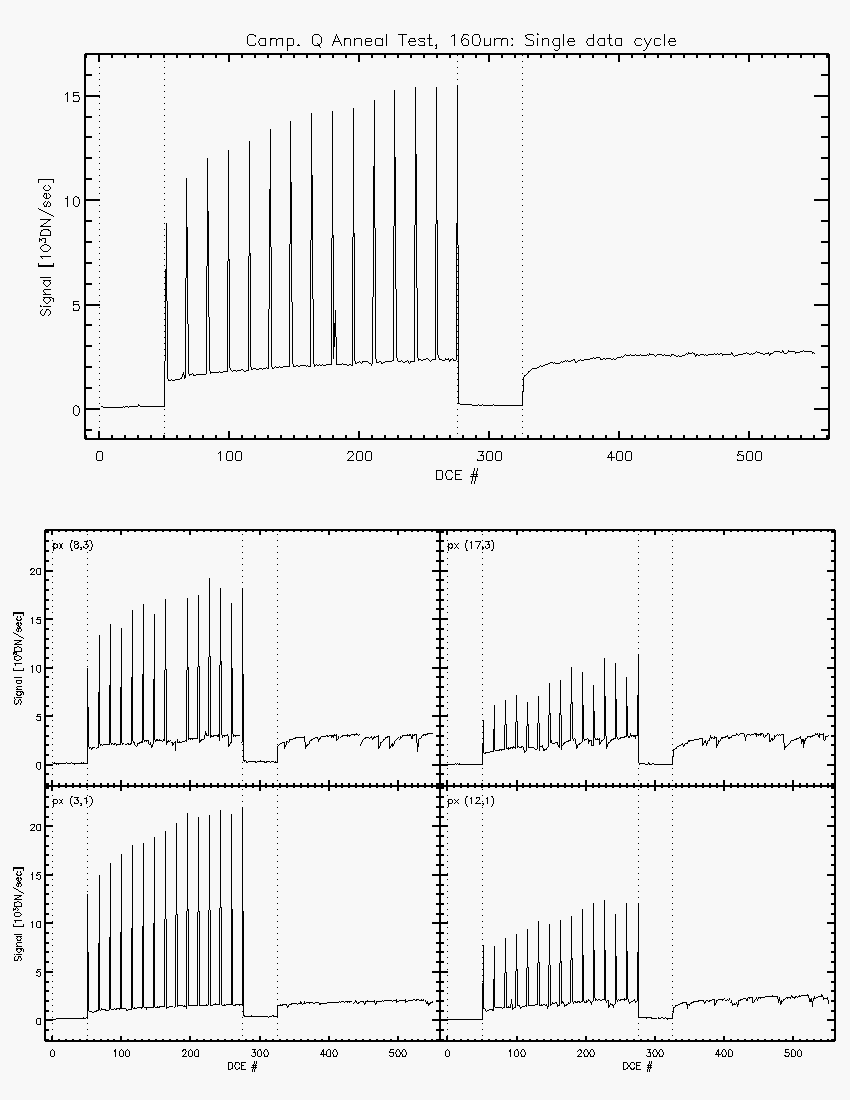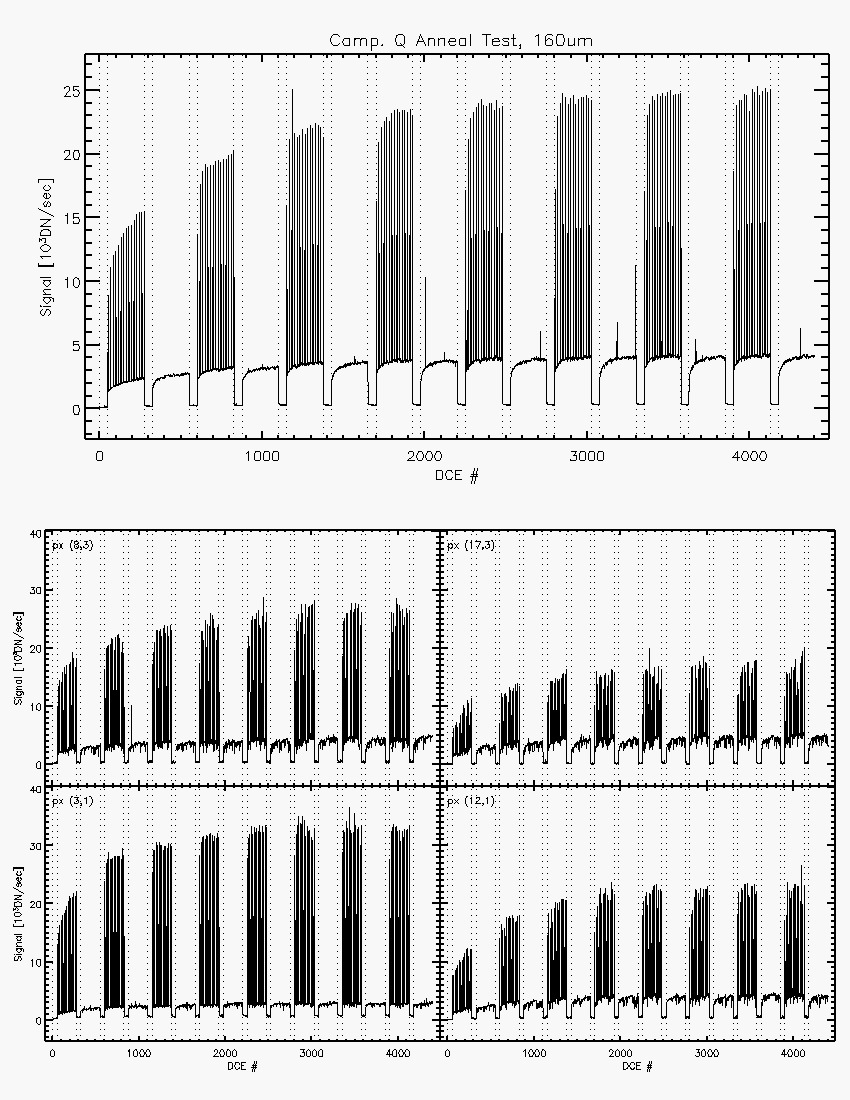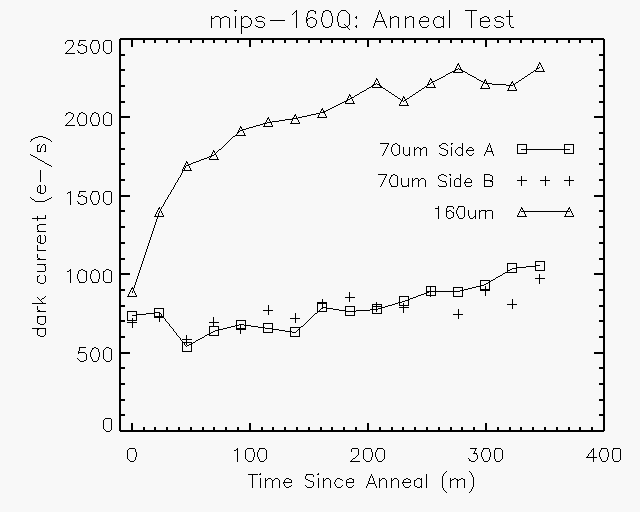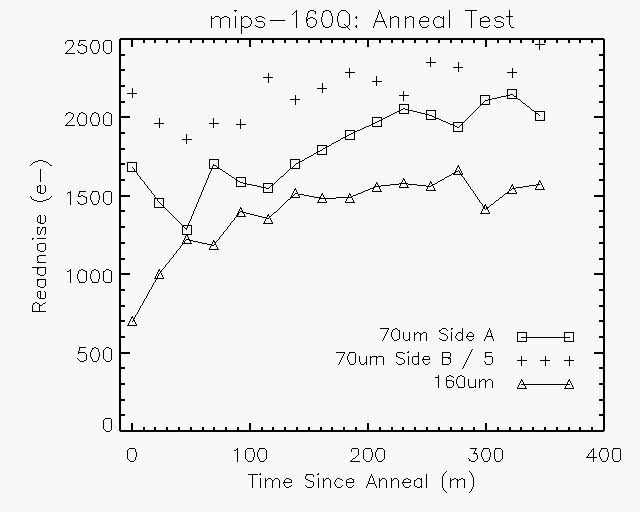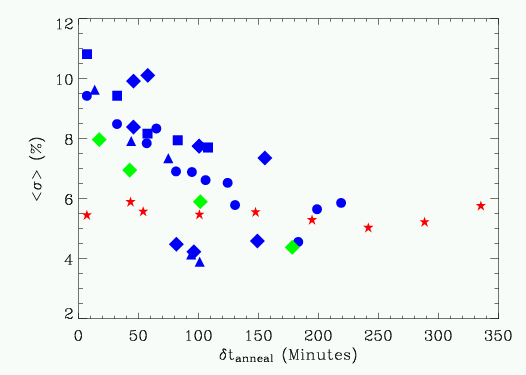Conclusions
The anneal introduced a fairly significant change in resposivity on both arrays.
The time constant for the transient to disappear was about 3 hours on the 160 µm
array, and longer than 6 hours on the 70 µm array.
Dark current and readnoise did not increase as a result of the annea, and both were
roughly equivalent to values from earlier campaigns. An exception to that is the dark
on side B of the 70 µm array, which may have been significantly reduced by the
anneal.
Stim repeatability was improved by annealing, in particular during the first 2 hours
after the anneal.
Photometric stability, repeatability, and linearity were not determined in this
test. If this task is repeated, making photometric measurements should be a priority.
Output and Deliverable Products
None.
Actions Following Analysis
